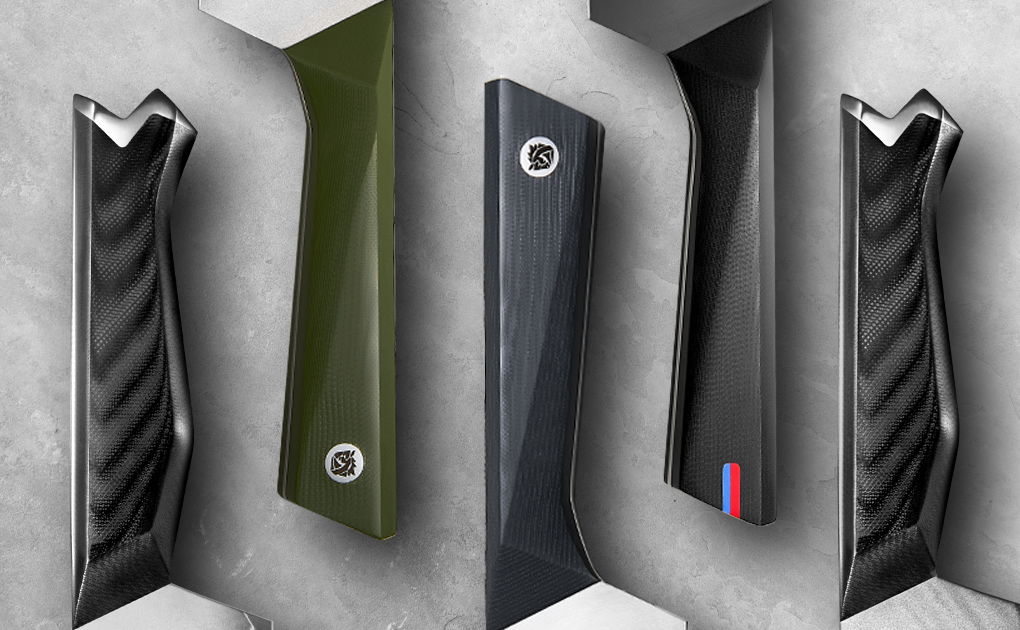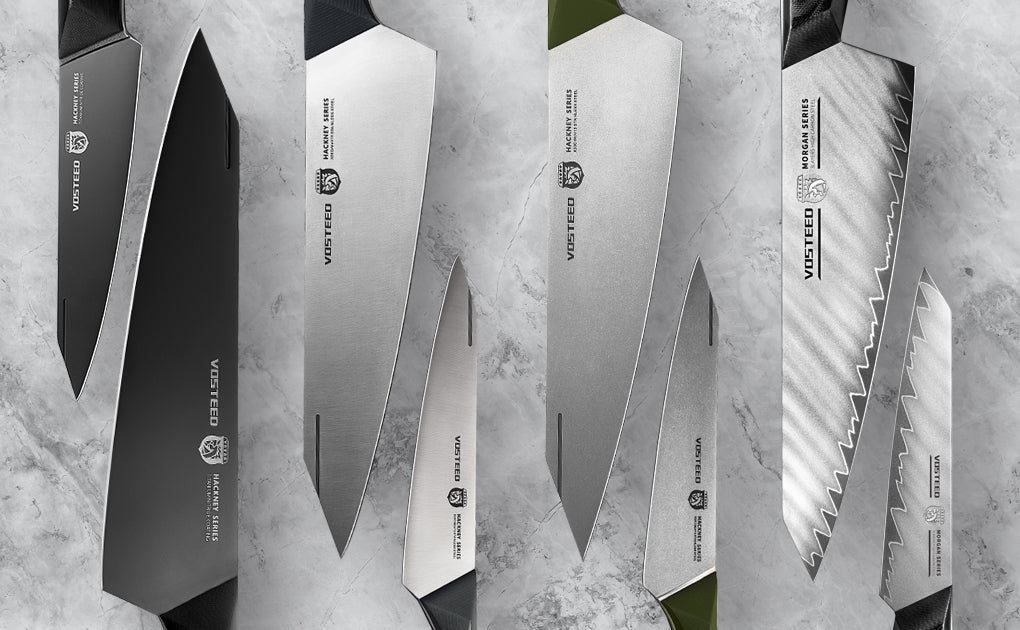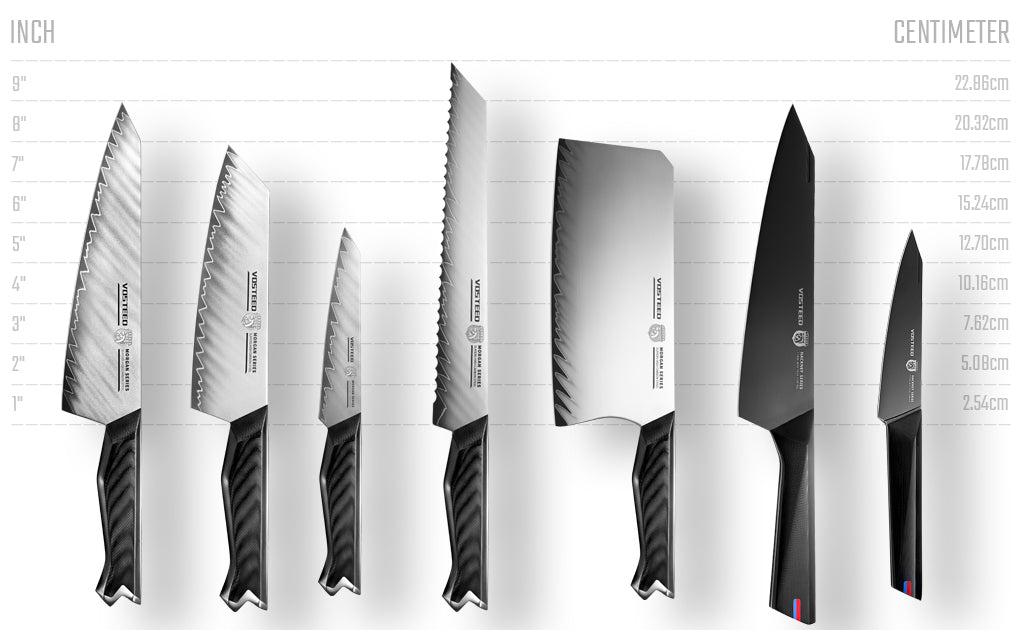While using a kitchen knife for meal prep, you will understand the importance of two main parts of a knife-blade and handle. I am sure that you have paid incredible attention to the blade because a sharp knife can get the work done fast and simple, but please don't forget that the handle plays a significant role when it comes to kitchen safety, and also a blade might lose it functionality without a proper handle.
That's why we want to share a complete kitchen knife handle guide and help you get the right one.
In this article, we will cover the pros and cons of different handle materials.
Wooden Handles

Wooden scales are the mainstay for knife handles because it adds unique beauty and has an excellent and textured grip.
Wood comes in a wide variety, ranging from thousands of colors and grains, so you have to take into account all the factors based on how, how often, and where you're going to use the knife.
It requires high maintenance. If the wet condition is a common scene, you will get cold feet on the soft or fine woods like black walnut, hardwood or stabilized wood will be a better option for you because they are durable.
Walnut
Pros
- Widely used (furniture, kitchen fixtures, gun handles, and more)
- Aesthetic beauty
- Contains oil and smells well
Cons
- Not as stable as other woods for handles
- Heavy
- Bleached when exposed to sunlight
Rosewood
Pro
- cost-effective
- Good for most demanding uses
- Durable and lightweight
Cons
- Less resistant to moisture
Ebony
Pros
- Resilient performance
- Deep and luxurious after polished
- Fine texture
- Doesn’t absorb moisture easily
Cons
- Pretty expensive
Cocobolo
Pros
- Super durable
- Give resistance in both wet and dry conditions
- Rich color scheme (Yellow & Red are the most common ones)
Cons
- Sometimes it might cause irritation and allergic reactions when touched
Stabilized wood
Hey! This is the best way to take advantage of softer or rotten wood
Inject polymer resin and then compress under high pressure to create a very dense and durable material that still exhibits natural beauty.
Pros
- Bewildering variety
- Attractive and stable
- Comfortable to hold
Cons
- Porous if not stabilized
While wood adds aesthetic beauty to the knife handle, there are also some disadvantages. The biggest factor is its maintenance, which does require more patience and dedication.
G10

G10 has been used on outdoor EDC knives and it is known for its lightweight and durability. It is a resin-based material, one of the toughest glass laminate materials on the market, which makes the handle grippy in hand so that it can prevent the knife from slipping from your hand.
Pros
- Solid and durable
- Light and grippy
- Highly water-resistant
- Excels in heavy use
Cons
- Doesn’t have a natural pattern like Micarta
Micarta

Micarta is also a resin-based material and the materials used in micarta handles can vary, including linen, paper, burlap, or canvas other than glass. Micarta praises durable kitchen knife handles for a long time of reliable use.
Pros
- Strong performance
- Light and durable
- Comfortable
- Less easy to scratch
Cons
- More expensive
- More susceptible to water
G10 and Micarta are both great knife handle materials available. Since G10 is made of glass fibers while micarta is made of linen, paper, etc, it tends to have stronger performance and durability.
Stainless
Stainless steel is chosen for handles due to its durability and strength. The whole knife can be constructed from one piece of steel. To provide extra friction, the stainless steel handle should be incorporated with etching or ridges, otherwise, the knife will easily slip from your hand.
Pros
- Easy to maintain
- Resistant to corrosion
Cons
- Prone to scratch or dent
- Added weight (Not for heavy-duty knives)
- Slippery
Thermoplastic Elastomer

TPE is an excellent choice for kitchen knife handle material. The material combines plastic and rubber, offering a firm grip so that the handle is non-slip even when wet.
Pros
- Extremely lightweight
- Easy to maintain
- Recyclable and eco-friendly
- Cost-effective
Cons
- Melt at a high temperature
A comfortable kitchen knife handle can take your sharp blade to the next level, which helps you fully enjoy your everyday cooking. It is not easy to determine what is the best material for knife handles. Whether it is lightweight or comfortable in hand, it is more about your personal preference.
If you have a hard time deciding on the right kitchen knife handle for your needs or the best bang for the buck, G-10 is an exceptional choice. It is a great all-around handle material that features excellent grip at a middle-tiered price.





Leave a comment
All comments are moderated before being published.
This site is protected by hCaptcha and the hCaptcha Privacy Policy and Terms of Service apply.